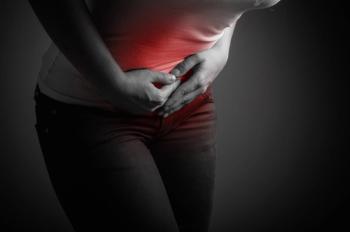
Land-, water-based exercise improves fatigue in women with fibromyalgia
Patients in the land- and water-based exercise intervention groups demonstrated greater improvements in fatigue when compared with controls.
In a cohort of women with fibromyalgia, land-based multicomponent exercise was shown to improve physical fatigue, while water-based exercise exhibited improvements in general fatigue as well as sleep quality, according to a study published in Archives of Physical Medicine and Rehabilitation.1 However, the magnitude of the changes was deemed small-to-medium, and the benefits were not sustained after exercise cessation.
More than 80% of patient with fibromyalgia report severe fatigue or significant sleep difficulties.2 These patients often categorize these symptoms as the most important clinical feature of fibromyalgia besides pain. While exercise is recommended for the management of these symptoms, there is no consensus on whether land- or water-based exercise is more beneficial and advisable.
“Although a recent meta-analysis suggested that both settings seem to provide similar benefits for fatigue reduction, the number of high-quality studies is scarce and precludes firm conclusions,” wrote Blanca Gavilán-Carrera, PhD, Department of Internal Medicine, Hospital Universitario Virgen de las Nieves, Granada, Spain, and colleagues.1 “Given that type of exercise and the setting could differentially benefit various outcomes, to better understand the effectiveness of both land- and water-based interventions is important from both research and clinical perspectives.”
Investigators aimed to determine the effectiveness of land- and water-based exercise on fatigue and sleep quality in women with fibromyalgia during a 24-week intervention. They also explored the persistence of these changes in the 12-week period after exercise cessation.1
The quasi-experimental study enrolled patients from fibromyalgia patient associations in 7 provinces of Andalusia, Spain, and university facilities. Participants were assigned to land-based exercise, water-based exercise, or a no exercise control group.1
Assessments were taken at baseline, week 24, and week 36. The primary outcome measures were the Multidimensional Fatigue Inventory (MFI) and the Pittsburgh Sleep Quality Index (PSQI).1
The intervention groups received a comparable multicomponent exercise program for the duration of the study (3 non-consecutive days per week, 45-60 minutes per session). Each intervention, intended to improve physical fitness components, was divided into a warm-up (8 – 10 minutes), conditioning section (15 – 17 minutes), aerobic section (15 – 25 minutes), and cool-down (10 minutes). The water-based exercise program was performed in a chest-high, warm pool.1
The study enrolled 250 women with fibromyalgia, with a mean age of 50.8 years. A total of 83 patients were placed in the land-based exercise group, 85 were placed in the water-based exercise group, and 82 received no exercise intervention.1
In comparison to the control group, patients in the land-based exercise group reported improved physical fatigue (mean difference -0.9 units; 95% confidence interval [CI] -1.7 to -.1; Cohen's d = .4). Similarly, patients in the water-based group had improved general fatigue (-.8; 95% CI -1.4 to -.1; d = .4), and global sleep quality (-1.6; 95% CI -2.7 to -.6; d = .6). The water-based exercise cohort had improved global sleep quality when compared with the land-based exercise cohort (-1.2; 95% CI -2.2 to -.1; d = .4).1
The changes were not maintained at the 36-week mark.1
Investigators noted that participants could only partially be randomly allocated due to the inability to maintain adequate temperature in the pools in certain study locations. However, the trial quality may have been more impactful on the treatment effect size than randomization alone.
“These findings support strategies that include exercise in management of fatigue and sleep quality in fibromyalgia and warrant further research examining the relevance of exercising regularly to sustain such benefits,” investigators concluded.1
References:
- Gavilán-Carrera B, Borges-Cosic M, Álvarez-Gallardo IC, et al. Effectiveness of land- and water-based exercise on fatigue and sleep quality in women with fibromyalgia: the al-Ándalus quasi-experimental study [published online ahead of print, 2023 May 26]. Arch Phys Med Rehabil. 2023;S0003-9993(23)00306-4. doi:10.1016/j.apmr.2023.04.028
- Andrade A, Vilarino GT, Sieczkowska SM, Coimbra DR, Bevilacqua GG, Steffens R de AK. The relationship between sleep quality and fibromyalgia symptoms. J. Health Psychol. 2020;25:1176–86
Newsletter
Get the latest clinical updates, case studies, and expert commentary in obstetric and gynecologic care. Sign up now to stay informed.











